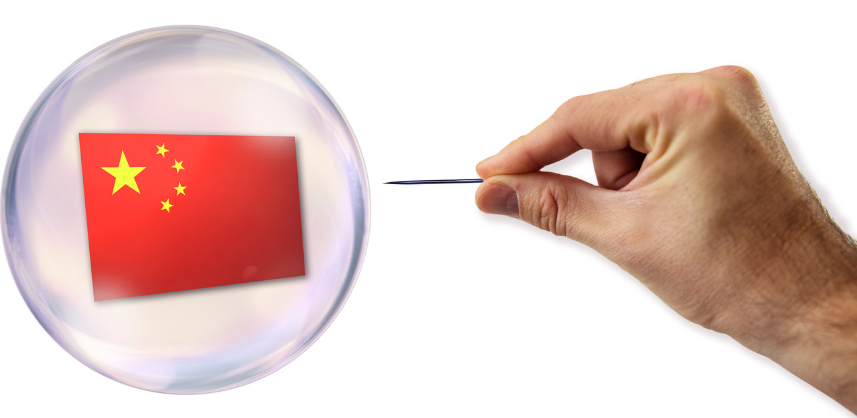– Intrexon (XON) licensed a cancer therapy from MD Andersen which cost them $50M in stock.
– Intrexon paid an extra $7.5M to get the deal done quickly so they could present it at the JPM Healthcare Conference and hype up the stock.
– Intrexon might have joined the cancer immunotherapy party too late.
– That’s too bad, because the company is almost out of cash and likely about to have a huge equity raise.
Connecting The Dots…Short Intrexon
“Cancer immunotherapy has been a rising market. We have more cards to turn over in the coming days and weeks.”
– Randal Kirk, Intrexon’s CEO at the JPM Healthcare Conference
With the selloff of cancer immunotherapy stocks today, what if Mr. Kirk is wrong and the MD Anderson deal was a mistake?
Intrexon (XON) is a biotechnology company that operates in the synthetic biology field. It designs, builds, and regulates gene programs. It’s one of those companies with supposedly a “breakthrough technology” that never quite gets there. It has collaborations with many different small cap biotechnology firms, which ends up being very costly for XON.
The Hail Mary Pass – Licensing A Cancer Therapy From MD Anderson That Nobody Has Shown Interest In
XON caused a huge short squeeze on 1/14/15 and gained 30%. This happened because it announced a collaboration agreement with MD Anderson to license its CAR-T Cell cancer therapy called Sleeping Beauty. Here is an intelligent, bearish analysis on the deal by EP Vantage biotech journalist Jacob Plieth. Jacob Plieth previously wrote an article on December 9th, comparing the different CAR-T therapies shown at ASH.
Sleeping Beauty showed the least amount of efficacy.
CAR -T is a hot market right now, and that might be the only reason why XON did the deal. It appears that this particular CAR-T therapy isn’t very good from Plieth’s analysis and what we’ve heard from other biotech analysts.
All XON had to pay was $50M worth of its stock, and its market cap shot up $900M. According to biotech expert Adam Feuerstein, the therapy is similar to that of Bellicum Pharma (BLCM). XON rose more on 1/14 than the entire market cap of BLCM. The collaboration was also with Intrexon’s partner, Ziopharm (ZIOP) which also paid $50M worth of stock in the deal. Ziopharm rose about 50% on 1/14/15. So both companies gained a combined $1.2 billion in market cap from just spending $100M on the license agreement for the drug. MD Anderson has a 120 day lockup period before it can sell the shares.
Ziopharm is a cancer biotech that has repeatedly disappointed investors and hasn’t had any success with its drug candidates yet.
MD Anderson has collaborations with many different big pharma companies. It knows what its research is worth. If it had a promising cancer therapy, it wouldn’t have sold it for only $100M in stock with a lockup period. As the above analysis mentions, MD Anderson’s Sleeping Beauty CAR-T studies have been presented for the past two years at ASH conferences. MD Anderson had plenty of time to offer to license it to its other collaborative partners. MD Anderson has cancer immunotherapy collaborations with Amgen, Pfizer, Bristol-Myers Squibb and GlaxoSmithKline. If they were interested, one of them would have licensed Sleeping Beauty before XON and ZIOP did.
The Pump
In order for XON and ZIOP to announce the deal at the JPM conference on 1/14 to pump up the stock, they paid MD Anderson an extra $15M in stock to rush through the process and get the deal done by then. This filing describes it. That is over 10% the price of the therapy, just in order to pump it at the JPM conference. That alone shows the amount of hype that went into this run-up, and the little value of the cancer therapy. MD Anderson has a 120 day lockup period on these shares as well.
At their JPM presentation, Randal Kirk, XON’s CEO, made many pumpish comments. This is a $3B+ company, too big to stay pumped off of promotional comments.
Some of his comments and my analysis of them:
“Cancer immunotherapy has been a rising market. We have more cards to turn over in the coming days and weeks.”
A CEO shouldn’t be saying this. Investors should figure it out on their own.
“Sleeping Beauty “impressive” and highly complementary to Intrexon’s tech, creating a leading platform and capability in the industry.”
If Sleeping Beauty were “impressive” then MD Anderson wouldn’t have sold it for only $100M.
“The MD Anderson deal is a wonderful alignment of the stars.”
You don’t pay $100M and have a guaranteed blockbuster cancer therapy. It doesn’t work like that, but the way Mr. Kirk talks it seems like he thinks it’s a sure bet.
High Cash Burn, Increasing Short Interest
Intrexon’s (XON) back has been against the wall. On December 15, 1.4 million more XON shares were reported to have been shorted over the previous month for an 11.26% increase in short shares. Why has the amount of short shares increased so much in one month? There could be a negative catalyst up ahead, I’m not sure.
What we do know is Intrexon has been performing badly the past couple quarters. For each of the last two quarters it had about $52M in losses. It also burned through about $40M in cash each quarter. With only $122M of cash and short term investments reported on September 30, 2014, Intrexon only has one or two more quarters to go before it needs to raise money again, and might do it sooner than you think.
– Intrexon (XON) licensed a cancer therapy from MD Andersen which cost them $50M in stock.
– Intrexon paid an extra $7.5M to get the deal done quickly so they could present it at the JPM Healthcare Conference and hype up the stock.
– Intrexon might have joined the cancer immunotherapy party too late.
– That’s too bad, because the company is almost out of cash and likely about to have a huge equity raise.
Connecting The Dots…Short Intrexon
“Cancer immunotherapy has been a rising market. We have more cards to turn over in the coming days and weeks.”
– Randal Kirk, Intrexon’s CEO at the JPM Healthcare Conference
With the selloff of cancer immunotherapy stocks today, what if Mr. Kirk is wrong and the MD Anderson deal was a mistake?
Intrexon (XON) is a biotechnology company that operates in the synthetic biology field. It designs, builds, and regulates gene programs. It’s one of those companies with supposedly a “breakthrough technology” that never quite gets there. It has collaborations with many different small cap biotechnology firms, which ends up being very costly for XON.
The Hail Mary Pass – Licensing A Cancer Therapy From MD Anderson That Nobody Has Shown Interest In
XON caused a huge short squeeze on 1/14/15 and gained 30%. This happened because it announced a collaboration agreement with MD Anderson to license its CAR-T Cell cancer therapy called Sleeping Beauty. Here is an intelligent, bearish analysis on the deal by EP Vantage biotech journalist Jacob Plieth. Jacob Plieth previously wrote an article on December 9th, comparing the different CAR-T therapies shown at ASH.
Sleeping Beauty showed the least amount of efficacy.
CAR -T is a hot market right now, and that might be the only reason why XON did the deal. It appears that this particular CAR-T therapy isn’t very good from Plieth’s analysis and what we’ve heard from other biotech analysts.
All XON had to pay was $50M worth of its stock, and its market cap shot up $900M. According to biotech expert Adam Feuerstein, the therapy is similar to that of Bellicum Pharma (BLCM). XON rose more on 1/14 than the entire market cap of BLCM. The collaboration was also with Intrexon’s partner, Ziopharm (ZIOP) which also paid $50M worth of stock in the deal. Ziopharm rose about 50% on 1/14/15. So both companies gained a combined $1.2 billion in market cap from just spending $100M on the license agreement for the drug. MD Anderson has a 120 day lockup period before it can sell the shares.
Ziopharm is a cancer biotech that has repeatedly disappointed investors and hasn’t had any success with its drug candidates yet.
MD Anderson has collaborations with many different big pharma companies. It knows what its research is worth. If it had a promising cancer therapy, it wouldn’t have sold it for only $100M in stock with a lockup period. As the above analysis mentions, MD Anderson’s Sleeping Beauty CAR-T studies have been presented for the past two years at ASH conferences. MD Anderson had plenty of time to offer to license it to its other collaborative partners. MD Anderson has cancer immunotherapy collaborations with Amgen, Pfizer, Bristol-Myers Squibb and GlaxoSmithKline. If they were interested, one of them would have licensed Sleeping Beauty before XON and ZIOP did.
The Pump
In order for XON and ZIOP to announce the deal at the JPM conference on 1/14 to pump up the stock, they paid MD Anderson an extra $15M in stock to rush through the process and get the deal done by then. This filing describes it. That is over 10% the price of the therapy, just in order to pump it at the JPM conference. That alone shows the amount of hype that went into this run-up, and the little value of the cancer therapy. MD Anderson has a 120 day lockup period on these shares as well.
At their JPM presentation, Randal Kirk, XON’s CEO, made many pumpish comments. This is a $3B+ company, too big to stay pumped off of promotional comments.
Some of his comments and my analysis of them:
“Cancer immunotherapy has been a rising market. We have more cards to turn over in the coming days and weeks.”
A CEO shouldn’t be saying this. Investors should figure it out on their own.
“Sleeping Beauty “impressive” and highly complementary to Intrexon’s tech, creating a leading platform and capability in the industry.”
If Sleeping Beauty were “impressive” then MD Anderson wouldn’t have sold it for only $100M.
“The MD Anderson deal is a wonderful alignment of the stars.”
You don’t pay $100M and have a guaranteed blockbuster cancer therapy. It doesn’t work like that, but the way Mr. Kirk talks it seems like he thinks it’s a sure bet.
High Cash Burn, Increasing Short Interest
Intrexon’s (XON) back has been against the wall. On December 15, 1.4 million more XON shares were reported to have been shorted over the previous month for an 11.26% increase in short shares. Why has the amount of short shares increased so much in one month? There could be a negative catalyst up ahead, I’m not sure.
What we do know is Intrexon has been performing badly the past couple quarters. For each of the last two quarters it had about $52M in losses. It also burned through about $40M in cash each quarter. With only $122M of cash and short term investments reported on September 30, 2014, Intrexon only has one or two more quarters to go before it needs to raise money again, and might do it sooner than you think.





